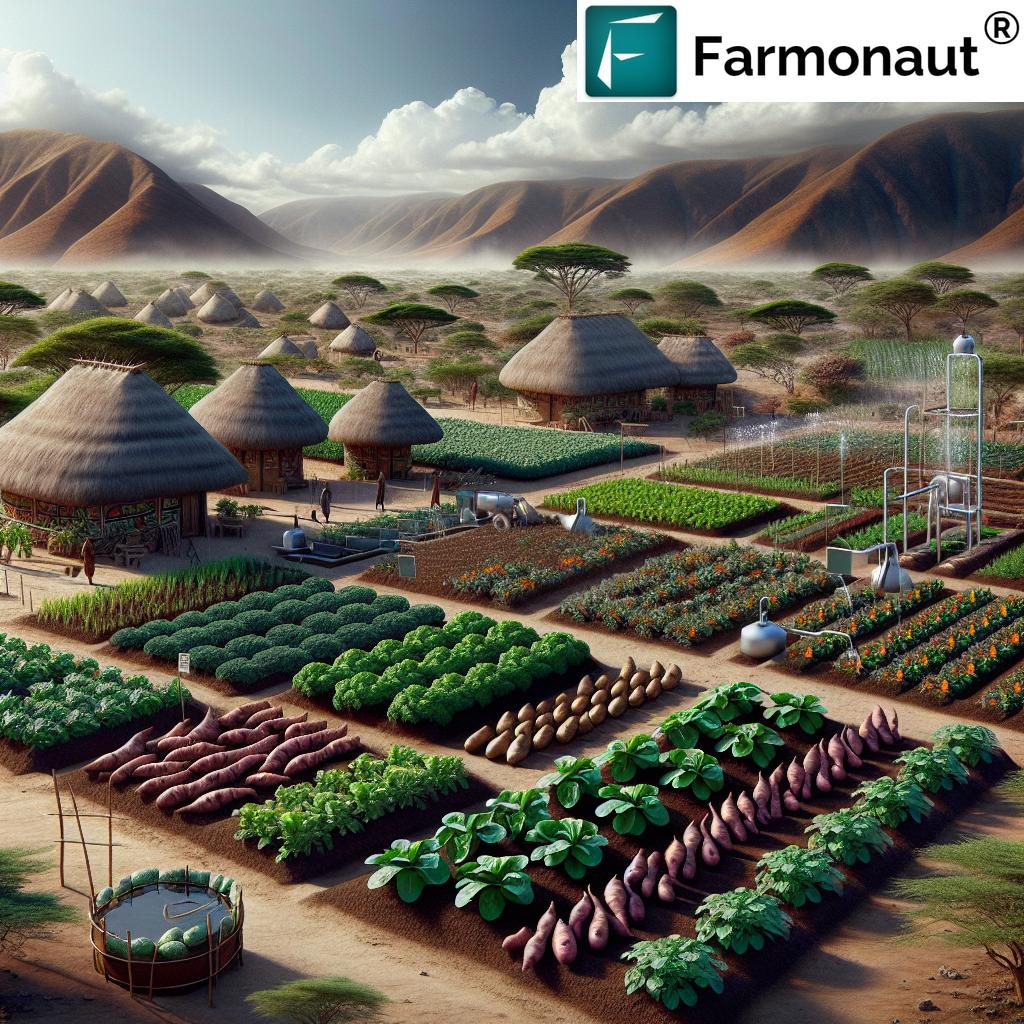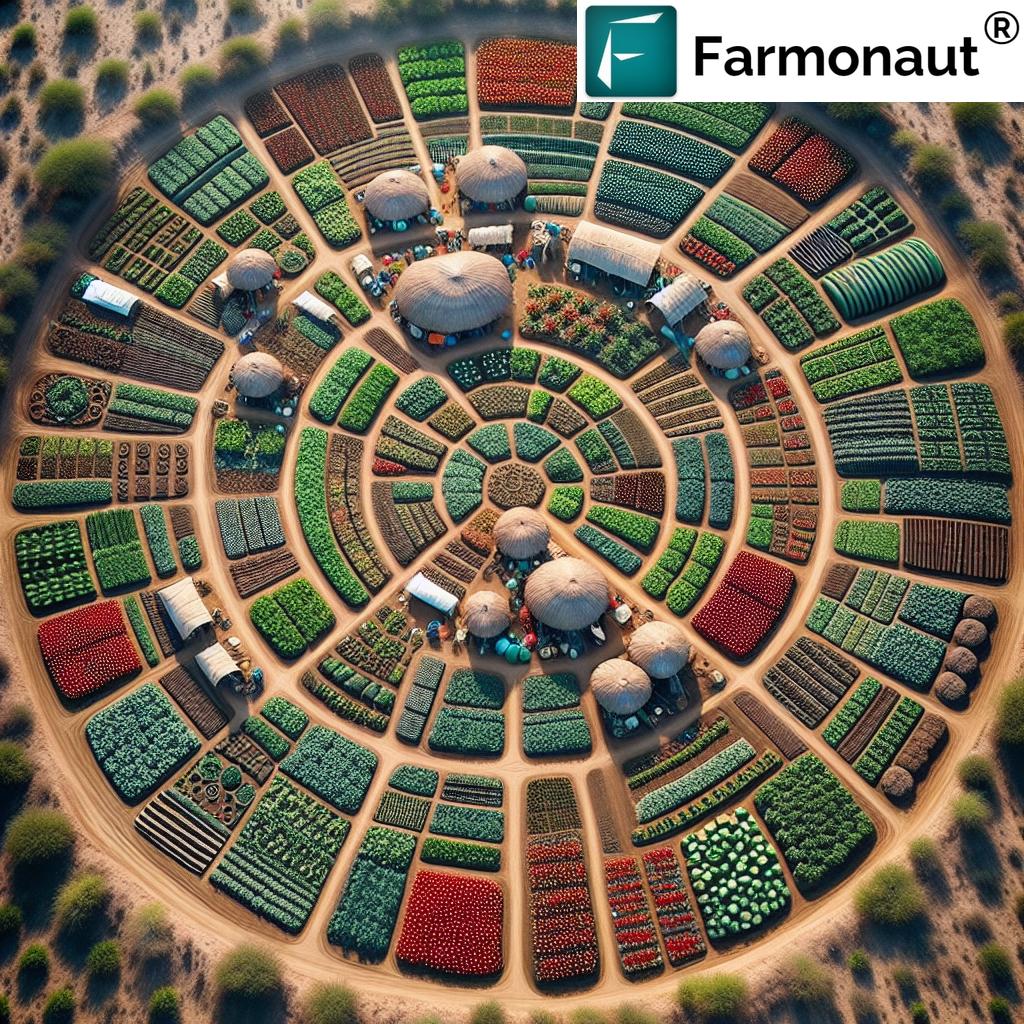Unlocking Food Security: Innovative Horticulture Techniques Empower Zambezi Farmers to Flourish Despite Drought
“Zambezi farmers cultivate over 5 diverse vegetable varieties, including spinach and sweet potatoes, using drought-resistant techniques.“
In the heart of the Zambezi region, a remarkable story of resilience and innovation is unfolding. We’re witnessing a transformation in small-scale farming that’s not just changing lives but also reshaping the future of food security in an area plagued by drought. Today, we’ll take you on a journey through the flourishing gardens of Sibbinda, where sustainable agriculture techniques are turning barren land into bountiful harvests.
The Seeds of Change: Richwell Mazumo’s Inspiring Journey
Our story begins with Richwell Mazumo, a dedicated teacher and part-time farmer in Sibbinda, a small community in the Zambezi region. In 2022, Mazumo embarked on a horticulture journey that would not only change his life but also inspire an entire community. With determination reminiscent of the Israelites receiving manna in the wilderness, Mazumo set out to cultivate a one-hectare plot, transforming it into a thriving garden teeming with diverse crops.
Rising as early as 3 AM, Mazumo tends to his crops with unwavering dedication. His garden is a testament to the power of crop diversification strategies, boasting an impressive array of vegetables:
- Tomatoes
- Green peppers
- Spinach
- Cabbage
- Carrots
- Beetroot
- Mangoes
- Sweet potatoes
This diverse selection not only ensures a varied diet for the local community but also serves as a buffer against crop failures, a crucial aspect of food security solutions in drought-prone areas.

Overcoming Small-Scale Farming Challenges
The path to success for Mazumo and other small-scale farmers in the region hasn’t been without its hurdles. Water shortages, a common challenge in drought-stricken areas, have pushed these innovative farmers to adopt water conservation in farming techniques that maximize every drop. Let’s explore some of the strategies they’ve implemented:
- Bucket Irrigation: In the absence of sophisticated irrigation systems, Mazumo and his fellow farmers have resorted to a labor-intensive but effective bucket system. This method ensures targeted watering, minimizing waste and making the most of limited water resources.
- Community-Supported Agriculture: Mazumo negotiated access to a communal borehole, showcasing the power of community collaboration in overcoming resource limitations.
- Soil Management: Implementing techniques to improve soil health and water retention, such as mulching and composting, has been crucial in maintaining crop health with minimal water input.
These rural farming innovations demonstrate that with ingenuity and determination, even the most challenging conditions can be overcome.
Drought-Resistant Crop Varieties: The Key to Thriving in Adversity
One of the cornerstones of Mazumo’s success has been the selection of drought-resistant crop varieties. These hardy plants are specifically bred to withstand water scarcity, making them ideal for regions like Zambezi that face frequent droughts. Let’s take a closer look at some of these resilient crops:
| Crop Name | Water Requirements | Growth Cycle (days) | Estimated Yield (kg/hectare) | Nutritional Benefits |
|---|---|---|---|---|
| Spinach | Medium | 45-60 | 15,000-20,000 | High in iron, vitamins A and C |
| Sweet Potatoes | Low | 90-120 | 20,000-25,000 | Rich in beta-carotene, vitamin C, and fiber |
| Sorghum | Low | 90-120 | 3,000-4,000 | High in protein and antioxidants |
| Millet | Low | 60-90 | 2,500-3,500 | Gluten-free, rich in B vitamins |
| Cowpeas | Low | 60-80 | 1,500-2,500 | High in protein and folate |
By incorporating these drought-resistant varieties into their crop rotation, farmers like Mazumo are able to maintain productivity even in the face of water shortages. This approach not only ensures a steady food supply but also contributes to the overall resilience of the local agricultural ecosystem.
Horticulture Business Tips: From Garden to Market
Mazumo’s success extends beyond mere cultivation; he’s turned his garden into a thriving part-time business. Here are some valuable horticulture business tips gleaned from his experience:
- Local Market Focus: By selling primarily to residents of Sibbinda, Mazumo has tapped into a ready market eager for fresh, locally-grown produce.
- Competitive Pricing: Offering bundles of spinach between N$5 and N$10, Mazumo provides an affordable alternative to produce from distant markets.
- Diversification: In addition to vegetables, Mazumo engages in livestock farming and cultivates staple crops like mahangu, maize, and sorghum, spreading his risk and income sources.
These strategies have not only made Mazumo’s venture successful but have also contributed to the local economy and food security of Sibbinda.

The Role of Technology in Modern Farming
While Mazumo’s success is rooted in traditional farming practices and community support, the integration of modern technology can further enhance agricultural productivity. This is where platforms like Farmonaut come into play. Farmonaut offers advanced, satellite-based farm management solutions that can be particularly beneficial for small-scale farmers looking to optimize their operations.
Through its android, iOS, and web applications, Farmonaut provides farmers with real-time insights into crop health, soil moisture levels, and weather patterns. This data-driven approach to farming can help farmers like Mazumo make more informed decisions about irrigation, fertilizer usage, and pest management, ultimately leading to improved yields and resource efficiency.
Explore Farmonaut’s innovative solutions:
For those interested in integrating Farmonaut’s technology into their own systems, the company also offers API access. Learn more about Farmonaut’s API capabilities here: Farmonaut API
Developers can find comprehensive documentation to get started with Farmonaut’s API here: API Developer Docs
Community-Supported Agriculture: A Model for Success
One of the most inspiring aspects of Mazumo’s story is the role of community support in his success. This model of community-supported agriculture has several benefits:
- Shared Resources: Access to communal boreholes and other infrastructure helps overcome individual limitations.
- Knowledge Exchange: Farmers can share experiences and techniques, accelerating learning and innovation.
- Local Market Development: A supportive community creates a ready market for locally-grown produce.
- Resilience Building: By working together, the community becomes more resilient to environmental and economic challenges.
This collaborative approach is a key factor in the success of agriculture empowerment initiatives in the region.
Sustainable Agriculture Techniques: Lessons from Sibbinda
“One small-scale farmer’s innovative horticulture methods have increased crop yields by up to 40% despite water shortages.“
The success of farmers like Mazumo in Sibbinda offers valuable lessons in sustainable agriculture techniques that can be applied in other drought-prone regions. Here are some key takeaways:
- Crop Diversification: Growing a variety of crops not only ensures a balanced diet but also spreads the risk of crop failure.
- Water Conservation: Implementing efficient irrigation methods and selecting drought-resistant crops are crucial in water-scarce environments.
- Soil Management: Practices that improve soil health and water retention are fundamental to sustainable farming.
- Community Collaboration: Sharing resources and knowledge within the community can overcome individual limitations.
- Adaptive Techniques: Being willing to adapt and innovate in the face of challenges is key to agricultural success.
These sustainable agriculture techniques not only help farmers flourish despite drought conditions but also contribute to long-term food security and environmental sustainability.
The Future of Farming in Zambezi: Challenges and Opportunities
While the success of farmers like Mazumo is inspiring, there are still challenges to overcome in the Zambezi region. Water shortages remain a persistent issue, and many small-scale farmers lack proper irrigation infrastructure. However, these challenges also present opportunities for innovation and growth.
Mazumo’s aspirations for the future include:
- Acquiring a water tank to improve water storage and management
- Installing fencing to protect crops from roaming livestock
- Drilling a personal borehole to enhance garden capacity
These goals reflect the broader needs of the farming community in Zambezi. Addressing these challenges through targeted investments and support could significantly boost agricultural productivity in the region.
Empowering the Next Generation of Farmers
Mazumo’s message to the youth is clear: embrace farming as a path to self-sufficiency and community development. This call to action is crucial for the future of agriculture in Zambezi and beyond. By encouraging young people to see farming as a viable and rewarding career, we can ensure the continued growth and innovation in the agricultural sector.
To support this vision, initiatives that combine traditional farming knowledge with modern agricultural technologies are essential. Platforms like Farmonaut can play a crucial role in this transition, making precision agriculture accessible to small-scale farmers and empowering them with data-driven insights.
Conclusion: A Flourishing Future in Sustainable Farming
The story of Richwell Mazumo and the farmers of Sibbinda is more than just a tale of agricultural success; it’s a blueprint for resilience, innovation, and community empowerment. Through sustainable agriculture techniques, crop diversification strategies, and a spirit of determination, these farmers have shown that it’s possible to flourish even in the face of severe drought.
As we look to the future, the lessons learned from the Zambezi region can inspire and guide farmers worldwide. By embracing innovative horticulture techniques, leveraging community support, and utilizing modern technologies, we can work towards a future where food security is a reality for all, regardless of environmental challenges.
The journey of unlocking food security is ongoing, but with each flourishing garden and each innovative farming technique, we move closer to a world where no community goes hungry. The farmers of Zambezi have shown us the way – now it’s up to us to follow their lead and cultivate a more sustainable and food-secure future for all.
FAQ: Innovative Horticulture in Zambezi
Q: What are the main challenges faced by farmers in the Zambezi region?
A: The primary challenges include water shortages, drought conditions, lack of proper irrigation infrastructure, and limited access to modern farming technologies.
Q: How has crop diversification helped farmers in Sibbinda?
A: Crop diversification has allowed farmers to spread risk, ensure a varied diet for the community, and maintain productivity even when certain crops struggle due to environmental conditions.
Q: What role does community support play in the success of small-scale farmers?
A: Community support is crucial, providing access to shared resources like communal boreholes, facilitating knowledge exchange, and creating a local market for produce.
Q: How can young people be encouraged to take up farming?
A: By showcasing success stories like Mazumo’s, providing access to modern farming technologies, and offering education on sustainable agriculture techniques, we can make farming more attractive to youth.
Q: What are some key sustainable agriculture techniques used in Sibbinda?
A: Key techniques include water conservation methods, use of drought-resistant crop varieties, soil management practices, and community-supported agriculture models.






